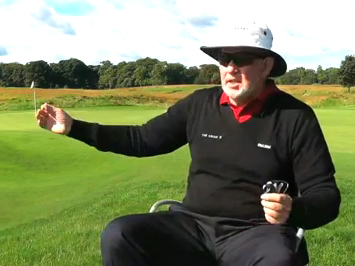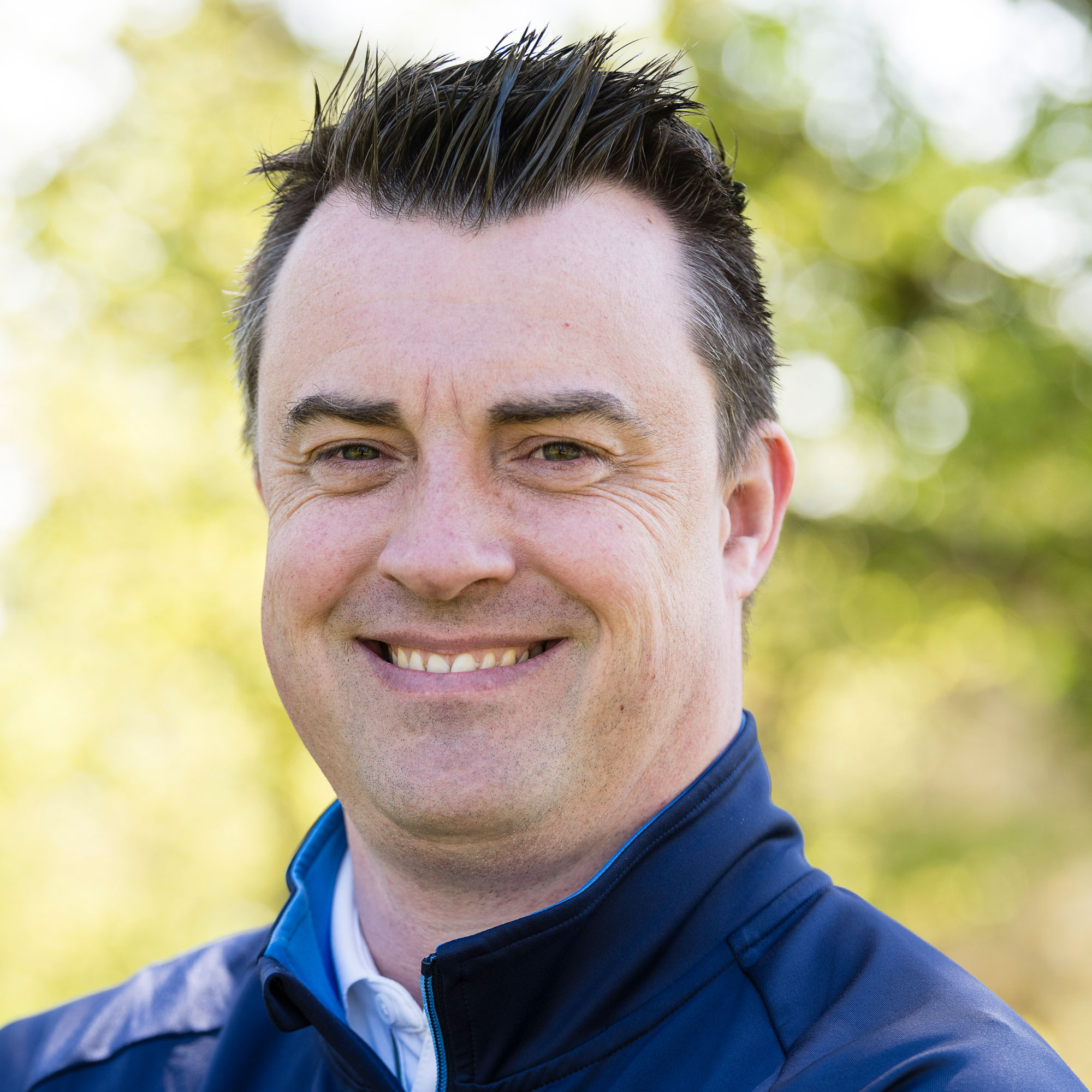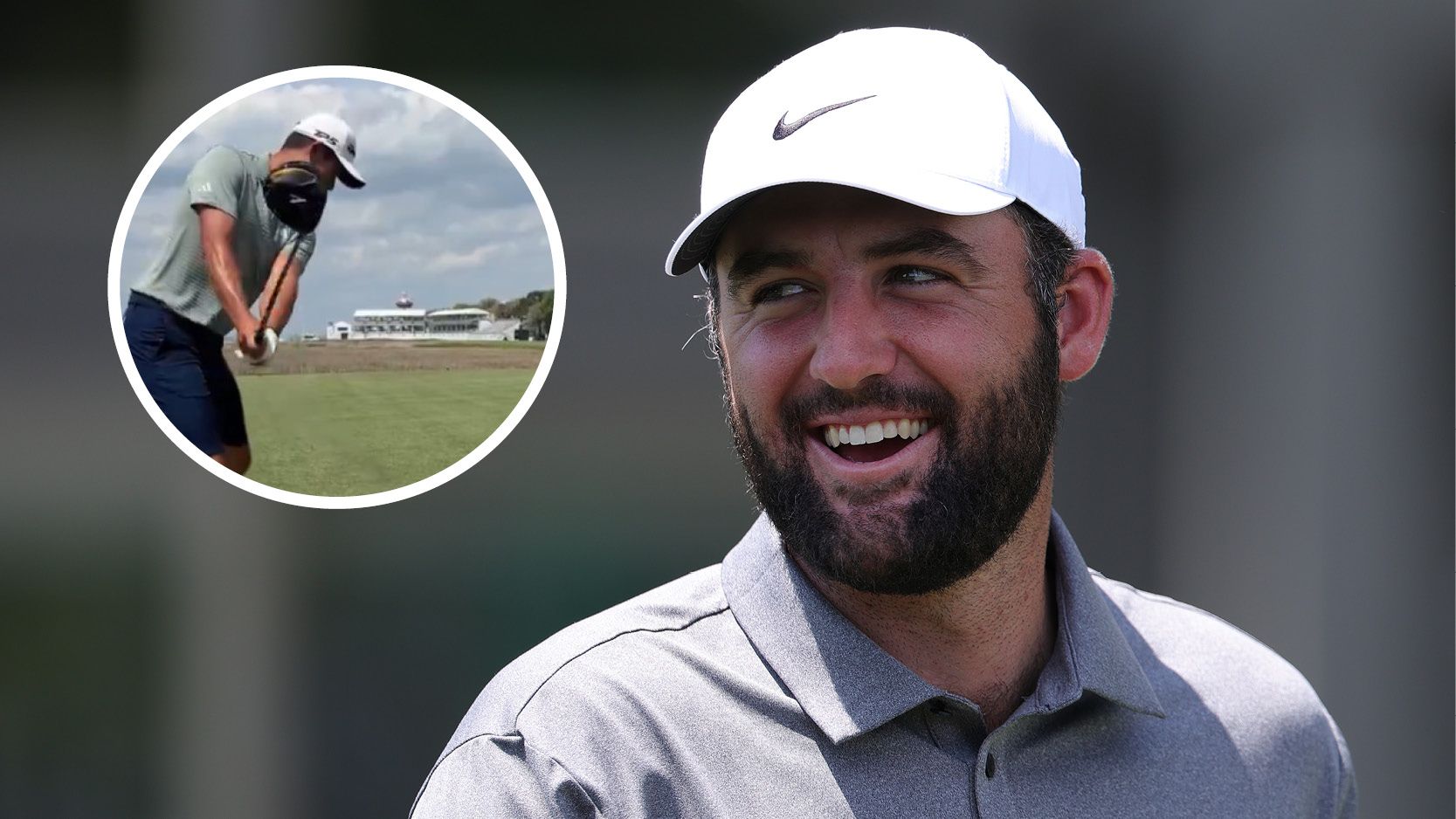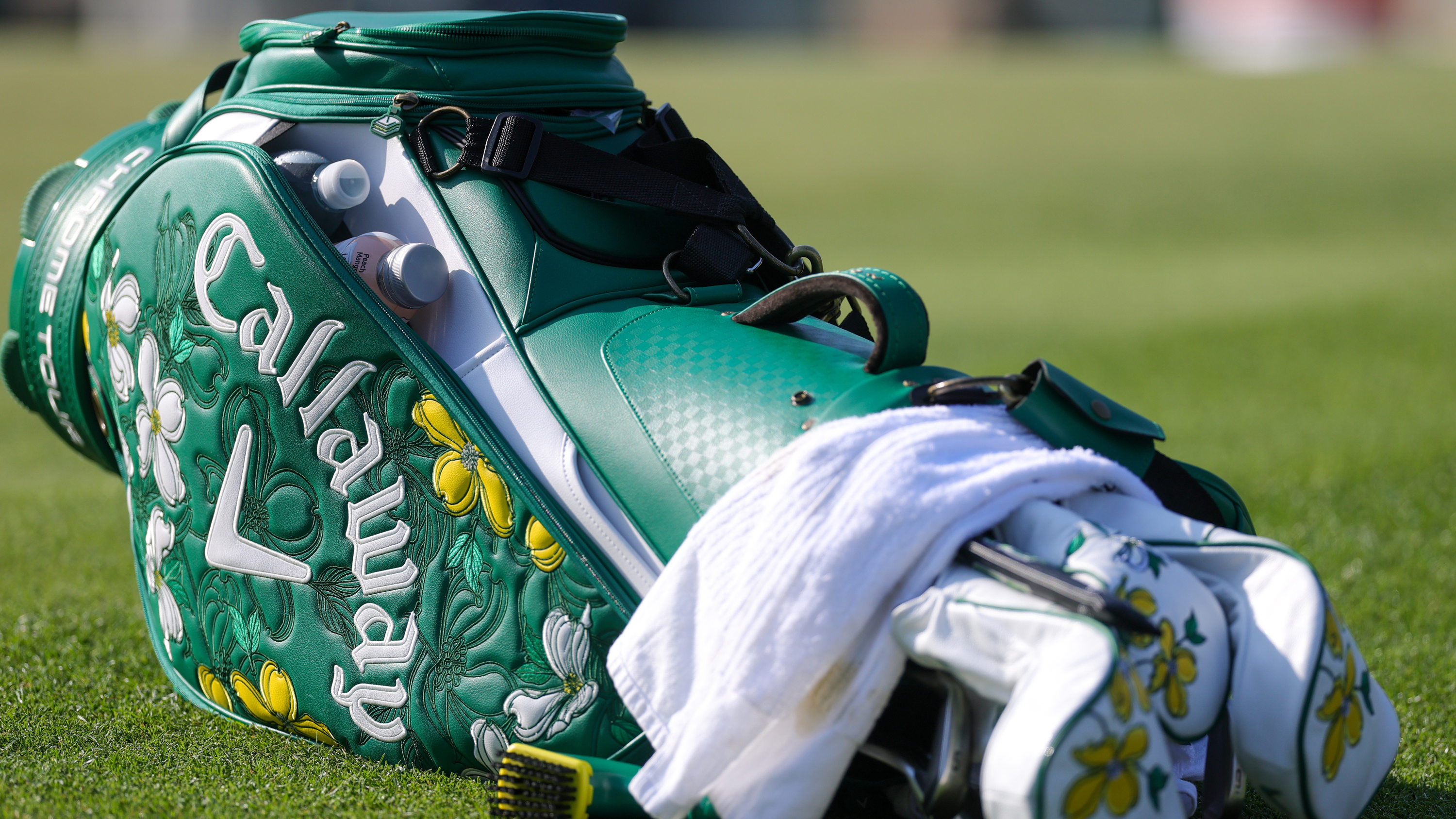Dave Pelz short game tips video
These Dave Pelz short game tips will make you more efficient on and around the greens, ensuirng you save your par more often.


These Dave Pelz short game tips will make you more efficient on and around the greens, ensuirng you save your par more often.
Dave Pelz short game tips
At the age of seven, I got my picture in the newspaper playing golf against a 77-year-old man. I can’t even remember who won, but from that moment on I’ve been captured by the game.
I wanted to be the best player on the planet, and for the next 13 years I tried to do just that. I enrolled at Indiana University and Jack Nicklaus was in the same class as me, so we played a lot of golf against each other.
I had a perfect record; we played 22 matches and I lost every one. I could never understand why I could beat Nicklaus at ping-pong, tennis and basketball, but I couldn’t get close to him on the golf course.
He beat me like a drum, and golf was the only thing I cared about. After university I got a job with NASA.
I loved it, but in the evenings and weekends I decided to use the research techniques I’d learnt to study what I was doing wrong with my putting and I found out that I wasn’t hitting the ball in the sweet spot.
Get the Golf Monthly Newsletter
Subscribe to the Golf Monthly newsletter to stay up to date with all the latest tour news, equipment news, reviews, head-to-heads and buyer’s guides from our team of experienced experts.
Simple as that. Once I made the measurements, I figured out what the problems were and it was very easy to fix them.
This made me realise that great putters are not born, they are made. If you don’t understand why you can’t putt, it seems a fair reaction to say putting is about natural feel.
But it’s not. I learned that 60 to 65 per cent of all golf shots happen within 100 yards of the hole, and 80 per cent of the shots lost to par happen in this area.
I discovered that if you’re not great from inside 100 yards, you’ll never be a top-class player. There are superb ball strikers who never win a Major because their short games aren’t good enough.
What follows are some of the most important discoveries I’ve made during the years I’ve spent trying to understand the short game.
Understand your putting
The fundamental problem that we all face on the greens is to do with feedback. On a tee, if you make a great swing, you see a great drive.
If you make a terrible swing, you see a terrible drive. But it’s a different story on the green. Sometimes, if you make a perfect stroke, it doesn’t go in.
Likewise, if you misread it and mishit it, the ball can go in. Putting is the easiest stroke in the game to execute, but the hardest to learn because the feedback is terrible.
Most golfers under borrow. They look at a putt that breaks six inches and think it breaks two. They set up to the putt, make a perfect stroke and they miss low.
Of course, they then think they pulled it and so they start making unnecessary adjustments. That is why so many players struggle with their putting. Under the right guidance of good feedback, any player can learn how to putt well.
Lob wedge
As with many discoveries, when you’re looking for one thing, you find something else. The data discovery that led to the lob wedge was this: I found that pros were seven per cent inaccurate with their power game.
Then, when you put a wedge in their hands, this jumped to between 13 and 20 per cent. I thought, “That’s crazy, it’s easier to make a little wedge swing than to hit a 2-iron.”
That made me understand the inaccuracies in the long game are left and right, but with a wedge, it is long and short.
In the pro game, many of the misses were long, so I thought it would be nice to have a club with more loft that wouldn’t hit the ball so far.
One you could make a three-quarter swing with, that would travel 50 or 60 yards, and get the right distance.
I made myself a 60-degree wedge and, without having to open up the clubface, I was able to hit delicate shots more easily and accurately than the pros.
When they came to see me, I’d beat them and, of course, the first thing they did was ask what I was using.
The first lob wedge I ever made was for Tom Kite. I then made one for Andy North. The next year, Kite put a 60-degree wedge in his bag – he was the leading money winner and he had the lowest stroke average. He proved that it helped, and so other players started using the lob wedge.
Using bounce
The bounce is a measure of how far the bottom of the club protrudes below the leading edge (see diagram, right), and it’s this bit of metal that helps the club ‘bounce’ through sand and grass.
Now, you can’t hit high, lofted shots off tight lies with a wedge with lots of bounce – as the sole hits the ground, it bounces and you skull the ball.
On the other hand, if you’re in the rough and there’s grass beneath the ball, and you’re using a wedge with very little bounce, you’ll strike the ball at the top of the club and it will travel no distance at all.
My advice would be to have a combination of bounce angles in your wedges. I believe that every golfer, no matter what their standard, should carry four wedges.
Inside 100 yards is more important than outside. You need a 60-degree and a 55-degree with a different bounce, also a 49-degree.
I believe you should also carry a 64-degree wedge. Phil Mickelson has five wedges, and for every tournament we will pick one of those wedges to leave out. He practises with all five and each wedge has a different bounce angle.
Competitive practice
In the past, people worked on their long games and their putting, but not on their short games. For some reason, it got missed out.
We have ranges and putting greens, but no chipping areas at many old clubs. I spent days with Tom Kite, his lob wedge and a series of laundry baskets.
My son would catch his wedge shots in a glove and he’d tell us the yardage. Every distance within 100 yards was covered. Tom didn’t have a God-given short game; he learned it and that’s how we did it.
I want you to understand that this game is learnable. You can improve until you’re into your 70s, and then you start losing your strength.
But you need to practise. Competitive practice is important because it tunes you in. On the golf course, every shot you hit will either help or harm your score, so you have everything to play for.
I want you to practise against a partner or a target, and I want you to measure your results. It does absolutely nothing for you to practise one way and play another, but that’s what most people do.
You get one swing in golf, the rules don’t let you have a second go. The hardest way to practise is to hit a drive and then a 7-iron, and then a 3-wood and then a wedge, changing your targets and your process for each shot. But it does work.
Phil Mickelson
Without doubt, Phil Mickelson is the best player I’ve ever worked with. He has become a very dear friend, and when we started, he wanted me to help him improve his game by a quarter of a shot per round in the Majors.
He’d never won a Major in 43 attempts when we started, and he’d missed a play-off by one shot six times.
Of course, I found that he was incredibly talented and that he had a wonderful short game, but I could also see he had a weakness.
I discovered that if I put his ball behind a tree, he’d hit it round or over it. If I buried it in the sand, he’d get it close.
But if I put the ball in the centre of the fairway, 20 yards from the pin, he was very ordinary. He wasn’t bad, but he wouldn’t hit it close enough.
The first change I made with Phil was to say: “The easier the shot, the harder you must engage with it.”
Now, Phil visualises every single chip shot going into the hole. He’s not trying to get it close, he’s trying to make it.
And he makes a lot of them. It was all about focus. On the difficult shots he just engaged that little bit better. We had to bring that mentality into the easy shots, too.
Clock-face pitching
The clock-face analogy was another accidental discovery. I was watching Tom Kite and Tom Jenkins hitting wedge shots, and my son was out there giving his feedback as to how far they were going.
I then made an amazing discovery; I was watching Kite swing and I could tell how far the ball was going without watching it fly.
How? It turns out that the great wedge players don’t swing faster to hit the ball further, they make longer swings – back and through about the same.
I figured that if you think of your left arm as the hour arm on a clock, you’d have a system for reference as to how far the ball will go, as long as your rhythm remains constant.
If my backswing goes to nine o’clock it goes so far, then 10 o’clock it goes a bit further. If the rhythm is the same, this reference point provides predictable results.
Holing 6ft putts
Putting is 43 per cent of the game. It’s not the most difficult or the most important, but it’s the most frequent shot in golf.
Half of all putts are inside 6ft, so the quickest way to improve your scores is to improve here. There’s a drill I learnt from Phil that really helps.
You put ten balls around the hole at 3ft, and you putt until you make all ten in a row. This is good because you have a little bit of different break on each.
Then, place ten balls around the hole at 6ft. Go round the circle a number of times, maybe ten times, and work out your average number of putts holed.
Then, every time you do this drill, you have to try to beat your average. You’re never going to make all your 6ft putts, but if you can become really good from inside 6ft, you’ll be a better golfer. Perfect Speed
This came from a test. Every putt has an optimum speed and this is the speed at which it reaches the hole.
If the ball is dying into the front of the hole, it is susceptible to any vagaries in the green, such as spike marks and other imperfections.
So, not as many putts hit the hole if they are rolling at dead weight. Stroke them a little faster and they start to go in.
However, as soon as they start to roll a little too fast, they will lip out more regularly. The optimum speed for any putt, so that it hits the hole and stays in, is one that rolls 17 inches past – that’s roughly half your putter length.
You’ll never miss the one back, but if you roll 17 inches past the hole from 40ft, 10ft or 3ft – that is the optimum speed for holing out.
I have games with the pros where if they roll the ball more than 17 inches by they get penalised, and if they roll the ball and it doesn’t get past the back edge of the hole, they get penalised. This helps them focus in on the idea of 17 inches.

Tom Clarke joined Golf Monthly as a sub editor in 2009 being promoted to content editor in 2012 and then senior content editor in 2014, before becoming Sports Digital Editor for the Sport Vertical within Future in 2022. Tom currently looks after all the digital products that Golf Monthly produce including Strategy and Content Planning for the website and social media - Tom also assists the Cycling, Football, Rugby and Marine titles at Future. Tom plays off 16 and lists Augusta National (name drop), Old Head and Le Touessrok as the favourite courses he has played. Tom is an avid viewer of all golf content with a particularly in depth knowledge of the pro tour.
-
 Scottie Scheffler Among Big Names Spotted Testing TaylorMade R7 Quad Mini Driver At RBC Heritage
Scottie Scheffler Among Big Names Spotted Testing TaylorMade R7 Quad Mini Driver At RBC HeritageVarious TaylorMade staffers, like Scheffler and Fleetwood, were seen testing the R7 Quad Mini Driver at Harbour Town Golf Links prior to the main event on Thursday
By Matt Cradock
-
 Building The Ultimate Callaway Golf Bag: Our Favourite Clubs From The Brand’s History
Building The Ultimate Callaway Golf Bag: Our Favourite Clubs From The Brand’s HistoryWe select the best and most legendary gear that Callaway has ever produced, from driver right through to putter...
By Fergus Bisset